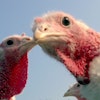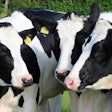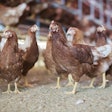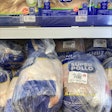
Seabirds that have developed natural immunity to avian influenza (AI) have been found by researchers in the U.K.
The consortium, known as FluMap, which came into existence in June last year, revealed that preliminary investigations in a small sample of some seabird species, including gannets and shags from Bass Rock, Edinburgh – home to the largest gannet colony in the world – have revealed specific immunity to AI strain H5N1.
FluMap has developed tools that can dissect the immune response of birds exposed to the virus, and its work has now attracted an additional GBP3.3 million (US$4 million) to better understand the discovery and to gain a deeper understanding of how the virus evolves and spreads.
The grouping hopes to look at the effect of antibodies on infection, to better predict the emergence of new viruses with different combinations in the future, allowing experts to stay one step ahead in safeguarding animal and human health.
Additionally, the FluMap team has also identified several genetic characteristics that explain the ability of the current H5N1 viruses to spread quickly and to infect a greater range of species.
The researchers have found that multiple virus genes have switched and evolved to work together to enhance fitness to infect, transmit and persist in birds. These genes, however, unadapted to humans.
Poultry infection
The team has also mapped the spread of infection over time.
They found that infectious virus can travel only distances of less than 10 meters, meaning that it is highly unlikely to spread between farms through the air.
Their studies have revealed that farm-to-farm spread is rare, rather it is incursions from wild birds that are driving infection in poultry, with different bird species representing differing risk levels for excretion of infectious material and potential transmission routes.
The scientists also hope to understand how the virus transmits from wild birds to poultry, the gaps in biosecurity that allow the virus to penetrate premises, and how this could be addressed.
What they have already concluded, however, that even where poultry facilities and management systems are high quality, weaknesses in procedural compliance can undermine them, and greater farm worker education could help to mitigate against incursions.



















